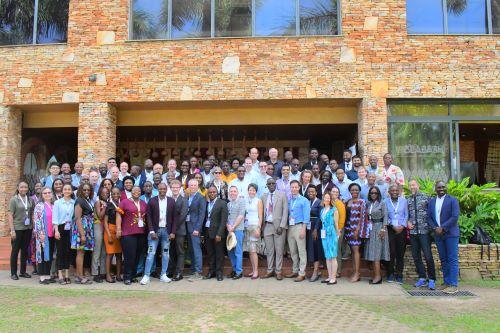The buzzwords “Bridge the gap,” “Bridging research to practice,” and “Closing the know do gap” represent goals for our research we have not yet achieved. Public health and academic research continues to research health interventions that do not get implemented. However, as we have begun to include community partners, policy makers, and funding and implementing partners, we are starting to see progress on implementing well-researched interventions.
The Global Cardiovascular Health Program (GCHP) housed under the Department of Global Health and run by Director Chris Longenecker, is a part of HLB-SIMPLe (Heart, Lung, and Blood Co-morbiditieS Implementation Models in People Living with HIV), a National Heart, Lung, and Blood Institute (NHNBI) funded consortium of research studies that includes six projects across six Sub-Saharan countries (South Africa, Botswana, Mozambique, Nigeria, Uganda and Zambia) focusing on hypertension care in People Living with HIV (PLHIV). Two of the projects, PULESA-Uganda and SCALE SAIA-HTN, are housed partially at UW, led by Department of Global Health faculty members Chris Longenecker and Sarah Gimbel respectively.
These projects are building off the success that the United States President’s Emergency Plan for AIDS Relief (PEPFAR) and other public and private initiatives to fight HIV/AIDS had in making antiretroviral therapy (ART) accessible to millions of people and offering it for free or at a minimal cost in much of sub-Saharan Africa at HIV clinics. They are working to integrate non-communicable disease care into these clinics alongside their regular HIV treatment services. “To improve hypertension care and improve downstream cardiovascular outcomes in sub-Saharan Africa, there is a lot of low-hanging fruit,” said Dr. Longenecker.
HLB-SIMPLe was formed partly out of a need for implementation science research to understand and overcome the barriers facing clinicians, health facilities, communities, and health policymakers that are preventing identified effective interventions from being scaled up and used more widely. As they approached their third year of activities, HLB-SIMPLe met in Kampala, Uganda to present on lessons learned, achievements, setbacks and brainstormed how to synergize activities such as cost-effectiveness and sustainability across projects.
A highlight of the meeting was celebrating the achievements of PULESA Uganda team, led by Dr. Longenecker, and TASKPEN (Zambia) in reaching the ultimate goal: policy change as a result of effective research. Using evidence produced by their projects and research that paved the way for them, the Zambian and Ugandan Ministries of Health have changed their hypertension screening policies for PLHIV.
“Many clinics do not measure blood pressure when PLHIV come for care, so many PLHIV with hypertension remain undiagnosed,” explained Dr. Longenecker. “Once diagnosed, a major barrier is access to and cost of BP medicine. If clinics can implement blood pressure measurement and provide access to medicines, outcomes will dramatically improve. The solution seems simple, but barriers to implementation are complex.”
Uganda has also set forth changes to their essential medicines list to make low-cost, better hypertension drugs available in country. These changes are being implemented via a Training of Trainers (ToT) health worker approach. While these essential medication reviews take months, this is an enormous step for better, more cost-effective care of all people who may experience hypertension in their lifetime.
Many of the changes implemented in Uganda and Zambia are creditable to three factors:
- The groundwork research by Martin Muddu on the LINKS hypertension integration with HIV care project.
- Research members participating in guideline reviews with the ministries of health and other stakeholders.
- Inviting local government leaders and stakeholders to participate in research projects at the onset and providing them the ability to make decisions and suggestions along the way.
As ministries of health begin shifting their health priorities to include NCDs, implementing partners such as PEPFAR and CDC have the opportunity to recognize the success of research backed policy change and the impact it has on health outcomes by providing funding. PEPFAR has already begun rolling out health systems infrastructure support such as providing blood pressure machines to clinics, training service providers and implementing task shifting for these new policies.
Being able to see an example of how to successfully bridge the gap of research and practice is evidence that our work, in collaboration with our global partners, can make change and provide better, more accessible care to populations.
